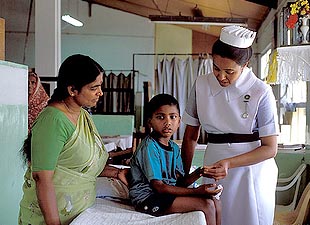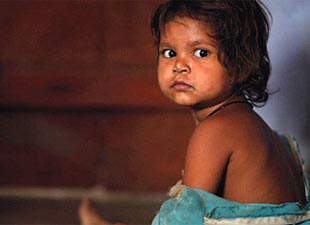
AsianScientist (Oct. 13, 2014) – A government program to provide health insurance for catastrophic illness to households below the poverty line in Karnataka, India has lowered both mortality rates and out-of-pocket expenses for the residents, according to a recent evaluation published in the British Medical Journal.
An evaluation of the program, the Vajpayee Arogyashree Scheme (VAS)—funded by the World Bank Group and led by Associate Professor Neeraj Sood, director of research at the USC Schaeffer Center for Health Policy and Economics—found that the risk of dying from conditions covered by the insurance dropped by 64 percent for residents with the insurance. Furthermore, out-of-pocket health expenditures for hospitalizations due to the covered conditions dropped by 60 percent.
“This World Bank study clearly shows how this program benefits the health of the poor in Karnataka,” said U.T. Khader, the state’s Minister of Health and Family Welfare. “It provides hospital care that the poor would have difficulty receiving without the help of the scheme.”
The free insurance covered specific high-impact medical conditions—such as heart disease and cancer—which poor residents often die from because they are unable to pay for the necessary expensive treatments.
Some of the unique features of the VAS program includes free tertiary care at both private and public hospitals empaneled by VAS for below-the-poverty-line (BPL) families with little or no access to tertiary care; automatic enrollment of all BPL families with no annual premiums, user fees, or co-payments; and health camps in rural areas by empaneled hospitals, which helped screen patients for tertiary care and transport them to hospitals in urban centers.
“The results of this study are important to India as it makes choices on how to make progress towards universal health coverage,” said Mr. Onno Rühl, World Bank Group Country Director for India. “The program shows how purchasing health services for the poorest can both improve health and provide protection from impoverishment due to out-of-pocket payments for health care.”
The evaluation included more than 82,000 households. Since the program was phased, covering poor households in the northern part of Karnataka in the first phase before expanding to the rest of the state, the study compared the health outcomes of roughly 45,000 households from villages that were covered by the insurance to roughly 37,000 households from villages that were not covered by the program.
“The study shows that public policy can play a strong role in reducing disparities in health due to socio-economic status. In villages without insurance, the poor had much higher mortality than the rich, but such disparities were completely eliminated in villages with insurance coverage,” Prof. Sood said.
“Rates of early death and illness from chronic conditions—such as heart disease and cancer—have increased dramatically in India in the past few decades, putting the poor at high risk of not having access to services they need and incurring payments for health care that push them deeper into poverty,” said Mr. Patrick Mullen, a World Bank Group senior health specialist and the manager of the evaluation.
Future research on the topic will explore the extent to which insurance programs can improve the quality and appropriateness of care.
The article can be found at: Sood et al. (2014) Government Health Insurance for People Below Poverty Line in India: Quasi-Experimental Evaluation of Insurance and Health Outcomes.
——-
Source: University of Southern California; Photo: Jakfoto Productions/Flickr/CC.
Disclaimer: This article does not necessarily reflect the views of AsianScientist or its staff.












